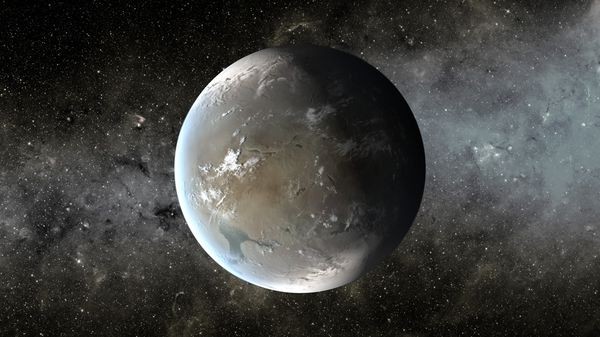Astronomists discovered a new Earth-like planet called Kepler-452b on July 23, Thursday There are hopes that the newly-discovered planet might contain life.
Kepler-452b has similarities to Earth though it is 60 percent bigger than Earth in terms of radius. Astronomists said that the newly-discovered planet has also a host star like Earth has Sun and its distance away from the host star is similar to the latter, which could be recipes for life in the Earth-like planet, Reuters reported.
Jon Jenkins, an astronomer said that this planet is probably the closest thing to Earth. The astronomer added that Kepler-452b has spent 6 billion years around its host star which is enough time for life to emerge somewhere in the surface if the planet is indeed habitable.
At its reported distance from its host star, surface temperatures would be capable for liquid water, a critical factor if the planet could sustain life. Jeff Coughlin, a Kepler scientist, said that the discovery of Kepler-452b is a great progress in finding habitable planets like Earth. Jenkins added that the newly-discovered planet might have a more rocky surface, gravity that is two times stronger, active volcanoes, and a more cloudy atmosphere.
One factor that might figure if there is life on the planet is the host star. The sun-like star is 1.5 billion years older than the Earth's host star which would make it 20 percent more luminous at the planet. The newly-discovered planet is located in the constellation Cygnus with a distance of 1,400 light years.
The discovery of Kepler-452b brings the number of Kepler's discovered planets by 4,696. Majority of the discovered planets are similar in size to Earth, New York Times reported. Astronomers added that nearly 10 percent of the 200 billion stars in Milky Way might have a planet similar to Earth, revolving around them.
The spacecraft of the National Aeronautics and Space Administration (NASA) was launched in 2009 which was called as Kepler Mission. The mission was to monitor Cygnus and Lyra constellations to locate possible planets.
The search for Earth-like planet begun 20 years ago when University of Geneva's Michael Mayor and Didier Queloz discovered the first planet to revolve around a sun-like star outside the solar system. The discovery triggered the hopes of astronomers to find life on other planets.
Queloz,at that time, added that if astronomers work enthusiastically to find Earth-like planets outside the solar system, the issue of life in space would be solved in the near future.



























